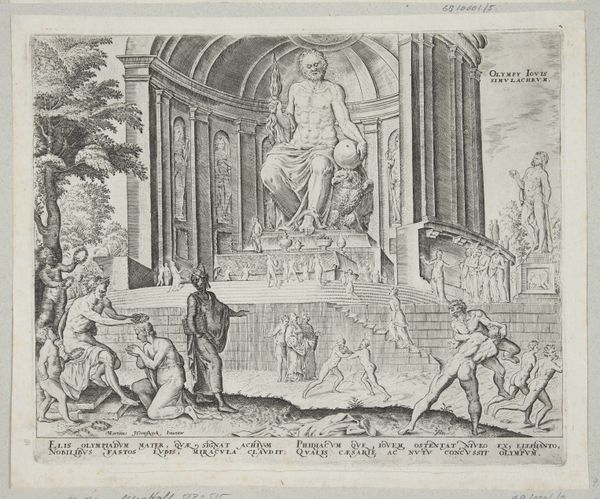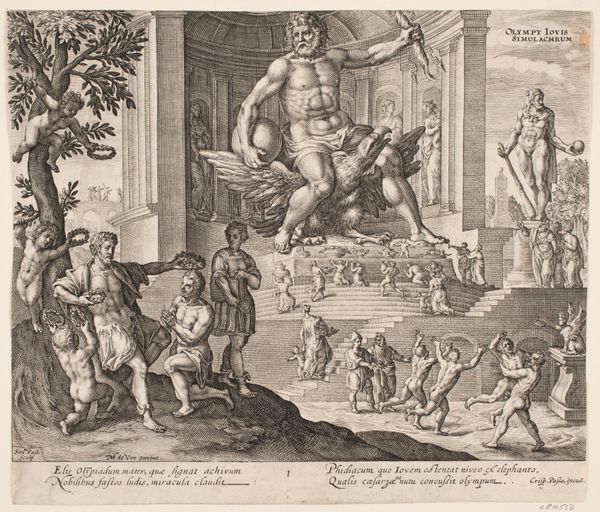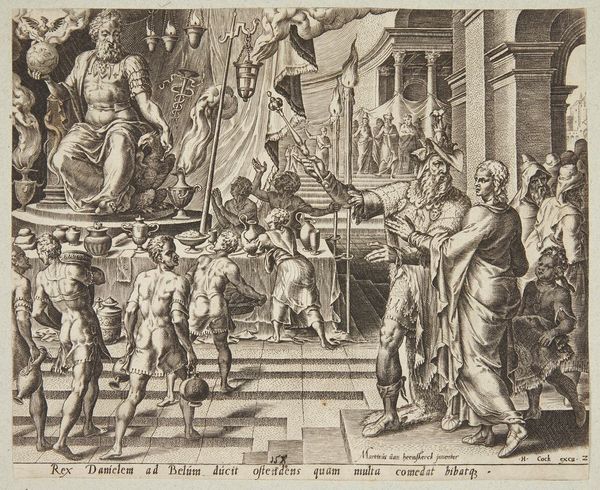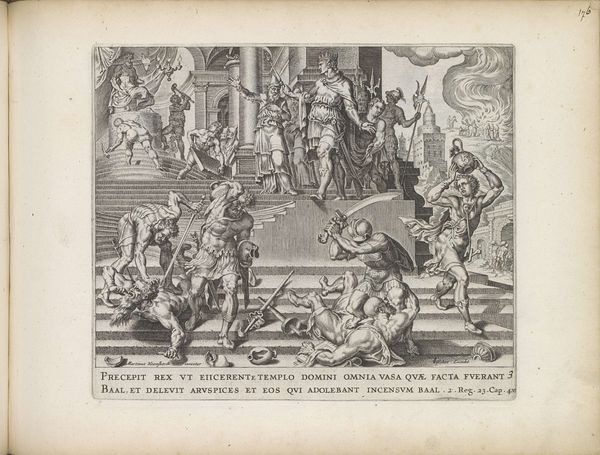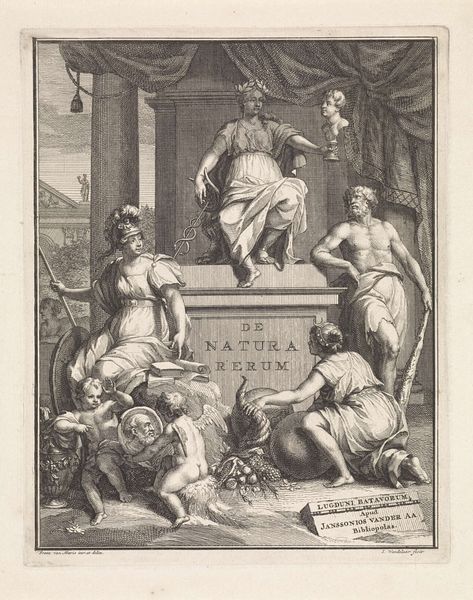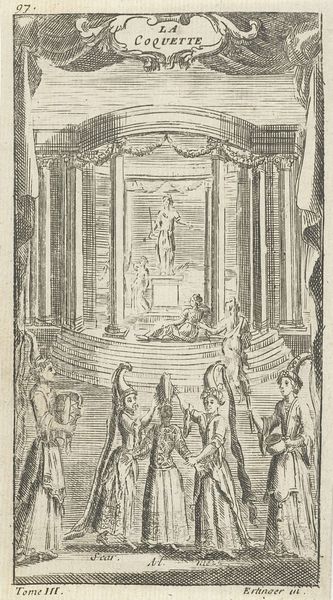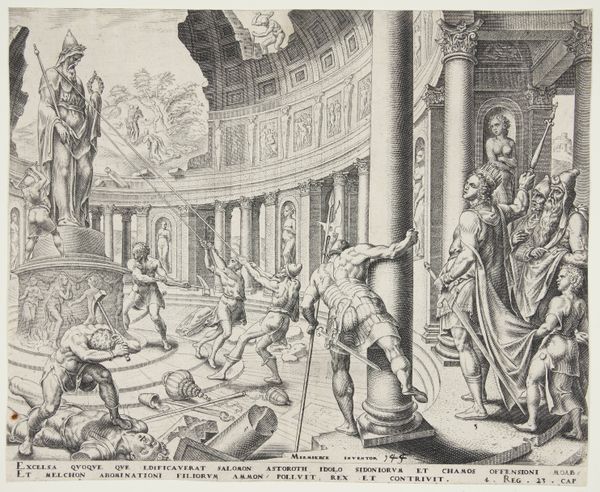
print, engraving
#
baroque
# print
#
greek-and-roman-art
#
old engraving style
#
figuration
#
form
#
line
#
history-painting
#
engraving
Dimensions: height 212 mm, width 264 mm
Copyright: Rijks Museum: Open Domain
Editor: Philips Galle's "Standbeeld van Zeus in Olympia," dating from the late 16th or early 17th century, is a print, an engraving, really. The sheer busyness of it strikes me first – so much is going on. What do you make of this overwhelming composition? Curator: Overwhelming is a brilliant word for it! For me, prints like this are time capsules. Imagine encountering descriptions of Zeus, maybe snippets from Pliny, and then seeing Galle’s vision. It's not just about accuracy; it's about conjuring a sense of awe. Do you get that almost feverish, imaginative energy? Editor: Definitely. I see how the engraving style adds to that slightly frenetic feeling. It makes it almost dreamlike. Is that Baroque influence? Curator: Precisely! The Baroque wasn’t afraid of dramatic excess. Think about it – the statue looms, while all around, figures are wrestling, paying homage. It’s theatre! Galle isn't just depicting Zeus; he’s staging a whole world, wouldn’t you agree? Editor: Yes, that performance aspect really comes through. Seeing this almost reminds you of the history of the Olympic Games in Greece, but from Galle’s eyes! Thank you; it certainly made me see how much stories can be told in a piece of art. Curator: It also gave me a different perspective on this image. This also helps us in finding value within this artwork that reflects Zeus and a staged world together!
Comments
No comments
Be the first to comment and join the conversation on the ultimate creative platform.
